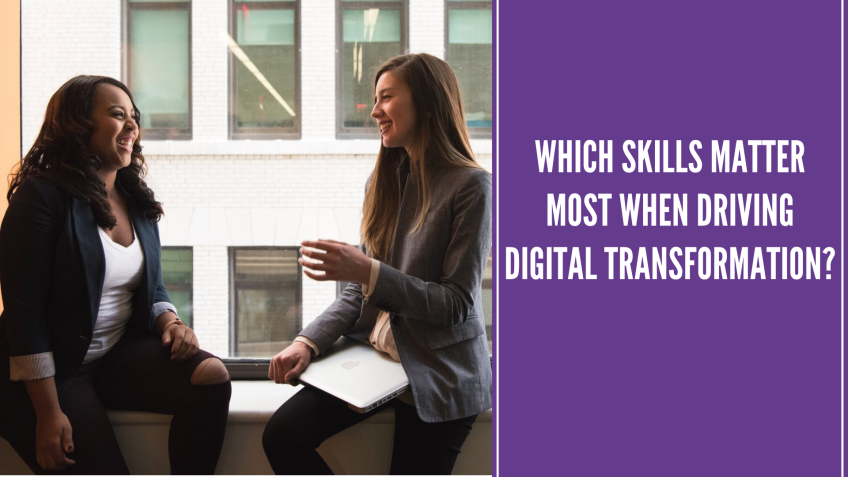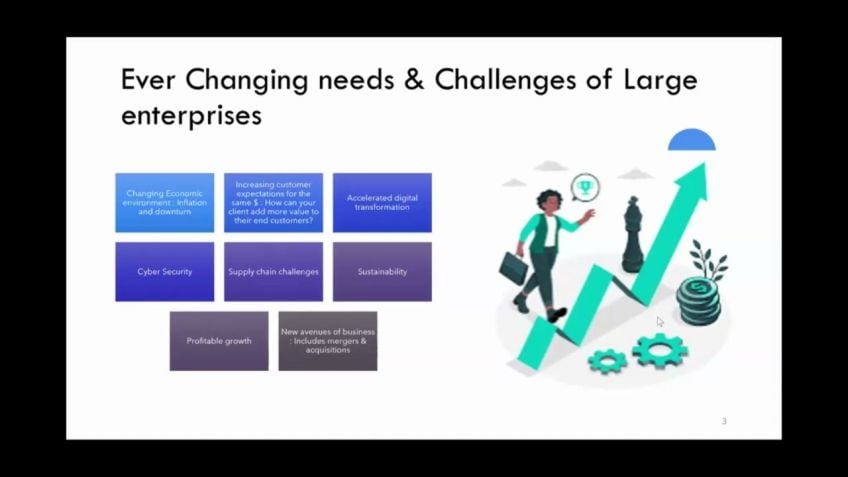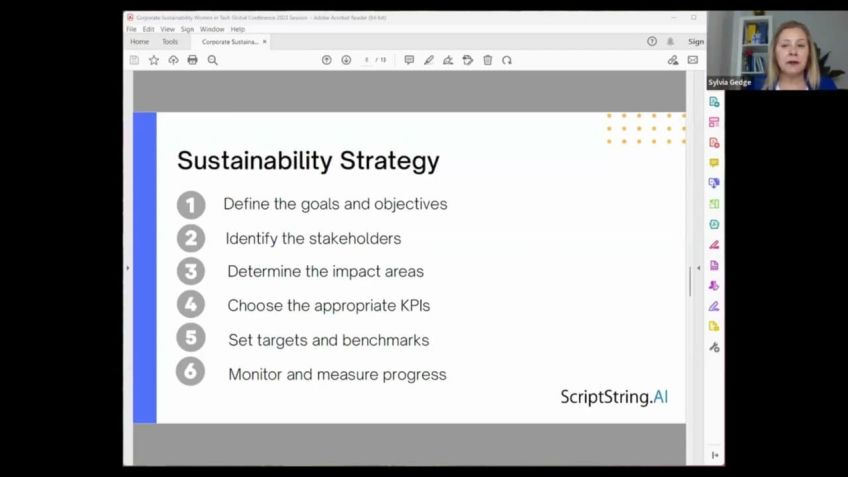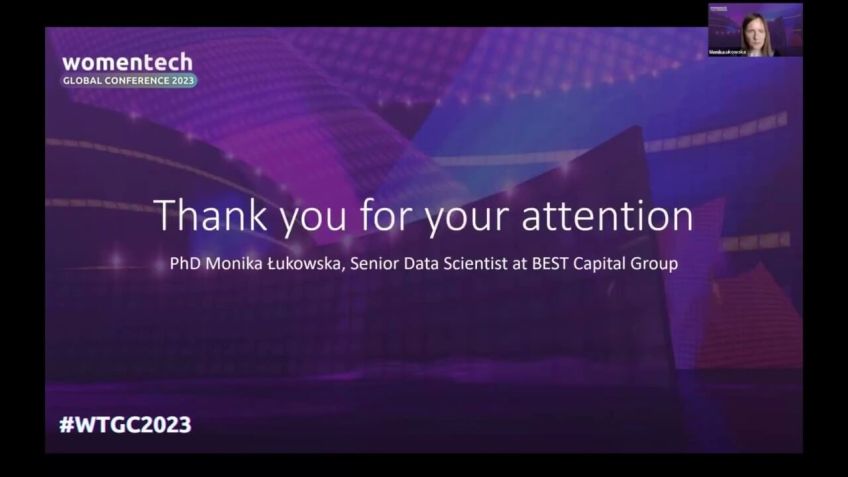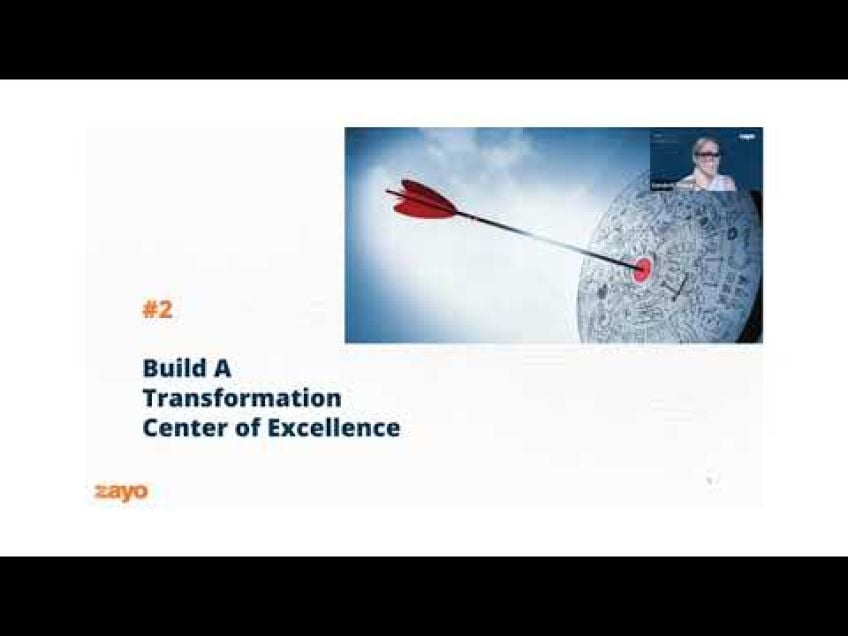Unlocking business impact through digital transformation
Grace Andrews
Principal Product EvangelistUnleashing Business Potential Through Digital Transformation
Hi there! We're here to discuss embracing digital transformation in your business approaches. Discussing the ways it can redefine your business model, if implemented correctly. Our guide today is the adept Grace Ores C Andrews, a Senior Solution Marketing Manager at Equinox.
Understanding Digital Transformation
Defined by the Gartner glossary, digital transformation is the process of exploiting digital technologies and supporting capabilities to create a robust new digital business model. However, this definition can differ in practice across different verticals, leading to a variety of interpretations. So, instead of focusing on purely theoretical aspects, let's dive into real-world stories illustrating successful digital transformation.
Real-life Digital Transformation Stories
Two companies that embody excellent digital transformation are Phillips and Netflix. Allow us to share their journeys.
Phillips: From Lightbulbs to Healthcare Tech
Phillips, primarily known for its lightbulbs, revolutionized its 130-year-old business model in 2014. The company decided to split into two entities; Phillips Lighting (now known as Signify) and Phillips as we know it today. The latter embarked on a health-based tech trajectory, which proved to be a huge success during the COVID-19 pandemic. In this time of need, they rapidly produced biosensor-embedded ventilators to help treat COVID-19 patients. It's a classic instance of company foresight, technical adaptation, and timing converging to yield impactful results.
Netflix: A Home Entertainment Game-changer
Netflix, once a humble DVD rental service founded in 1998, fully embraced digital transformation, becoming a media powerhouse. Along with award-winning series and films, the brand now boasts a digital infrastructure rivalling the likes of Amazon Web Services and Google Cloud Compute. The business effectively identified the right moment to pivot, reinventing their business model to meet evolving consumer needs.
Digital Transformation: Technology, Necessity, and Timing
Through these real-life examples, we can see that digital transformation in the business realm is significantly about discerning the right time to try something new. These companies successfully identified the intersection of technology, necessity, and timing, leading them to their current standing.
Gauging The Current State of Digital Business Transformation
While assessing the current state of affairs, two key data points stand out:
- 3.25 trillion - The expected spending on digital transformation by 2023.
- 70% - The estimated percentage of digital transformation initiatives that fail.
With so many initiatives failing, it's crucial to discern what sets successful transformations apart. The article "The How of Digital Transformation" from the Harvard Business Review helps shed light on the issue. It underlines the difference between simply digitizing (enabling business as usual) versus implementing digital transformation (building real, long-term competitive advantages to succeed).
Tools and Frameworks for Successful Transformation
In any digital transformation journey, having effective tools and frameworks is critical. However, there's no one-size-fits-all solution. A successful digital transformation is more than just technology adoption; it requires a deep, organic transformation within an organization. The transformation must permeate every level of the corporate hierarchy and be aligned with long-term visions and market opportunities.
The Four Pillars of Digital Transformation
For a successful digital transformation process, you need:
To wrap it up, remember: every company's transformation journey is unique and demands a distinct approach. Be bold and fearless in your pursuits and remember to leverage the power of 'yes, and.'
For more insight on this topic, feel free to reach out to Grace at [email protected] or connect with her on Twitter at GraceOrsi.
Video Transcription
Awesome. Well, everyone, welcome to Unlocking Business Impact through Digital Transformation. My name is Grace Ores C Andrews and I am a senior manager for solution Marketing here at Equinox. And I'm really excited today to talk to you about digital transformation. Why don't we go ahead and get started?
So to get started, we're of course gonna start with our definition. So let's talk about precisely how we define digital transformation. Oh Sorry about that. It's seeming to not let me be able to progress to the next slide just one moment. Sorry about that. What is a technical talk without a little technical difficulties? Awesome. So let's go ahead and talk about the definition of digital transformation. Digital transformation is the process of exploiting digital technologies and supporting capabilities to create a robust new digital business model.
Now, this definition is quite one could say dictionary and it comes from the Gartner glossary and it's one that can apply to many verticals and have many ways in which it's interpreted. So I thought instead of standing by this definition, which I do agree with that, we could actually maybe talk about transformation in the wild and talk about it in story. So let's actually talk about two use cases of digital transformation that I think went well or at least um defines what I believe to be business and digital transformation. So I want to tell you the two stories. One is about Phillips. So Phillips, a lot of us might know Phillip for their work with light bulbs, right? It's a company that was started in 1891 in the Netherlands family owned and run for over 100 and 30 years. And fast forward to 2014. In 2014, Phillips decided that they were going to do something that was quite new, quite experimental and quite groundbreaking. And that's they were gonna divide up their company, they were gonna create Phillips lighting, which is now signify and they were gonna have Phillips as we know it today.
And Phillips began to embark on a journey towards health care applications, health care, smart tech and health care um components. Well, fast forward to 2020 it's the beginning of the global pandemic. And Phillips is standing at a really interesting intersection of timing, necessity and ability.
And so Phil is actually able to help create a new ventilator that they're able to mass produce at scale quite rapidly that have biosensors embedded within them that allow for medical professionals to offer safe care to the most highly contagious COVID-19 um individuals. Now this is only possible because six years earlier, Philip decided to make that split. And even though it was a very, you know, for some people shocking maybe unpopular decision, they made it because they understood that where they were was not where they wanted to end up. Let me give you another example. And that's with Netflix, I think we all know about the streaming service provider, Netflix at this point. But for those of you who may not be as familiar, Netflix started off as a DVD rental website in 1998 right as DVD S were entering the market in Asia. And what they understood the problem to be was that you couldn't get the kinds of videos that you wanted when you wanted them as soon as you wanted them and you were inconvenienced by having to go to, you know, a VHS or movie facility. And so they decided that they were going to bring it to the consumer in their home. Now let's move to the present. And Netflix currently has award-winning shows, scripted and non scripted documentaries.
They've even been nominated for Oscars and they are content conglomerate with a digital infrastructure and a cloud capacity to rival Amazon web services and Google cloud compute. I think it goes to show you that digital transformation, especially when we're talking about it inside of business can mean so many things, especially when you understand that a big piece of the puzzle is knowing when it's time when it's time to pivot when it's time to move on and when it's time to try something new.
So I want to tell you a more personal story and that's about me and my brother. So my brother and I are like most siblings. He's five years older than I am and we all slate between being arch nemesis, being best friends. He's my biggest cheerleader and sometimes my greatest bully and I love him dearly. And this past weekend he dragged me out of the house and insisted I come and see his gym and he has a private sports facility training building here in Tennessee called TLT Sports Performance.
And he wanted me to try out a new treadmill and look at his new recumbent bikes and also give the thumbs up or thumbs down of the new layout of his chin. And so I begrudgingly went mostly because I was reworking this talk at the 11th hour, I had decided to scrap everything I had in order to start and build something new. And so my brother was like, let's go anyway. So we go and we're talking, I, of course, I'm obliged to walk on the treadmill, which is a smart treadmill with a flat screen, touchscreen panel, preprogrammed workouts. It's actually quite impressive. And then of course, I look at the bike and I look at the layout and we start talking about digital weights such as tonal, which is a digital weight system as well as things like the mirror which allows for you to train with a reflexive service that shows you a trainer and lets you see yourself at the same time.
Now, I know you're probably thinking, well, what's this got to do with digital transformation? And honestly, that's a great question and I'm gonna answer it. So by spending time with my brother in his gym, when we first got there, he actually didn't have the keys to get into his building. He needed to unlock the keys or unlock the doors by using an app, an application that lets you open your doors from wherever in the world you might be in case you or someone else gets locked out when we got in the gym. Another application on the treadmill that allowed for you to pick a variety of programs more so than what's normally on a traditional treadmill. And it really got me thinking about what digital transformation is and I reworked my definition of digital transformation based on the interaction inside that gym on Sunday. And I believe that digital transformation is actually the intersection of technology necessity and timing.
I think you've actually got to have all of the above in order to be able to begin to ask yourself the questions and create the frameworks needed in order to transform technology. So let's talk about what that actually means in application, right? So the way that Netflix and Phillips were both able to take technical know how and merge it with an opportunity in the market as well with as long term vision. And I think that that's a big component of it. It's being able to understand that to get from point A to point B, you have to be able to push the needle a little further than your peers. So let's talk about what the current state of things a actually are. So the current state of things, as we know, it are actually quite varied, right? The state of digital transformation has a lot of data around it. And I'm not going to spend too much time discussing every one of these data points. But the data point that I actually do want to look at or the two data points that I want to look at is that is are the last two on the right. So 3.25 trillion, that's the number in monetary currency of spending on digital transformation in 2023 and 70%. Now, this number really means a lot. And it got me thinking about why things don't always work out the way we believe.
And this number is the percentage of digital infrastructure and digital transformation initiatives that fail. And this is quite a high percentage. It means that only 30% of those who undergo a process of transformation are actually going to be successful. And so the question actually then becomes well, why, why are people not more successful? And I actually think that the answer to that lies in this quote. And so we see here that Lewd and Money wrote an article for the Harvard Business Review where they say the former is mostly about enabling business as usual and staying in the game while the latter is about building real long term competitive advantages to succeed. And what they're talking about is digitizing versus digital transformation. Now, what is digitizing and what actually is the difference digitizing is when you take on digital applications without necessarily changing the entire framework of your company, your business or your or organization.
And so a way to look at it is with my brothers, Jim. Yes, he has an application that opens the door. Sure, he has smart um technology, smart equipment and is at the cutting edge of um reform inside of wellness. But what does that mean for the way in which he sets up the gym and the way in which he creates his programming, the way that he utilizes new modalities for wellness. And that's what digital transformation is. It's the merging together of these worlds. It's saying yes, we have the tools and we have frameworks that we're applying. But we also understand that we've got to actually leverage market opportunity and timeliness and you know, the cousin of timeliness, which is necessity in order to create long term competitive advantage.
So that actually takes me to my next point, which is well then what are effective tools and frameworks that can be used inside of your transformation process. So let's talk about that. And before we talk about the tools I actually want to talk about the framework. So this is a framework that I created and it was inspired by Harvard business reviews, the five fronts of digital transformation in the middle market, which is by Doug Far and Anil K Makaha and you know, Doug and Anil, which I'm saying that like they're old friends, they're not.
But, you know, I feel quite familiar with this article now that I've spent some time with it. You know, they say that what you actually want to know is you want to know what you're selling, how you're producing it, how you're selling it, how you're supporting it. So your it backbone and who is supporting it for you. So your workforce and as much as I agree with those tenants that they have built, I actually think that you really have to do is you have to ask the right questions. So I took a bit of their framework and I built this one and I'm calling this, you know, the four guiding principles and the four guiding principles are the what, who, why and how and these are the questions that I believe you've got to ask yourself in order to understand what is actually happening in your company, in the present and identify what it is that you want to build in the future and then create a roadmap that fills the gaps.
Now, here's the catch when you go to ask these questions and not all these questions are gonna be applicable to your organization or your business endeavors. But you pick the questions that make the sense for you the most sense for you. And you also pick the questions that create more questions. You know, that's something that sometimes we're afraid of in the business world is. Well, what happens when we ask a question that we don't know the answer to, right? If the, if we were lawyers, we would say no, you never asked the question, you don't know the answer to. But since most of us, some of us are not, you know, legal counsel, I would say ask the questions, you don't know the answers to and inside of the unknown inside of those gaps are actually where you are going to start to build the solutions that leverage the tools and the frameworks of the future.
And so what you really want to know when you go to ask the, what's the, who's the whys and the hows is who you are as a company and who you're trying to become. And that's so important. A lot of companies, we don't have the luxury of digging deep into these kinds of questions every day. But if you're serious about your digital transformation and you don't want to just digitize, you want to actually push yourself into transformation, you're going to have to not only ask these questions but listen for the answers and sometimes the answers are not gonna be ones we like and sometimes the answers are not gonna even exist.
And sometimes you're going to have to create the precursor to what it is you wish to build. And that leads me to another point. That's really, I think, beautifully illustrated with Phillips. And that is these workflows are sometimes and by sometimes, I mean, most likely going to be outside the wheelhouse of the current revenue model and product cycle that you're in. So we saw that with Phillips, right? Most likely when Phillips announced in 2014 that they were splitting up into two bodies, Phillips lighting and Phillips, I, I'll call it Phillips traditional. We probably, it was the first we'd heard of it, but most likely they had already been having these conversations asking these kinds of questions and the answers that they had come up with led them to the idea that they had to separate in order to grow a new branch of the business that they knew would eventually become the full branch of the business, right?
And it's been 25 years since, you know, they've really kind of moved away from lighting. And as we kind of get to that point, they're now beginning to wind down on some of those processes, right. Signifies all on its own. Same thing for Netflix. Netflix started off doing DVD S but now, and they still do DVD S, by the way, you can still get a DVD sent to your house from Netflix. But they're also winding down on the DVD rental portion of their business because even though that's the model that had best served them, it's not the model that's gonna continue to serve them well. And so these questions are really about asking ourselves what it is that we wish to build, who are our consumers and customers? And what is it that they need necessity? Once again and timeliness are going to be two of your best facilitators in digital transformation. So now that we've kind of gotten a handle on the what the, who the why and the, how, let's actually talk about measurement and tools. So what I want to say about measurements and metrics is you gotta collect them, you gotta measure it and you've got to check back in with those measurements as you're trying to create this, you know, build this ladder to climb from your point A to your point B, you've got to have measurable action items that you can look back and say when we tried that this happened, when we tried that, that happened.
And if it's not for your own business, looking at your cons, your collaborators, your competitors in your verticals and in your industries to see how they're performing, how they're doing. Data is everywhere, there is so much data being collected, there's really no reason why you shouldn't be able to find data that can really help shape the work you do. So now that we're talking about shaping the work we do, why don't we go ahead and get to the tools portion? So here's my tool slide. I know some of you are probably thinking, oh OK. Well, um where are the names or the logos of the tools and frameworks we should be using? Where can we sign up for them, et cetera. And this is what I wanna say. Honestly, I don't want to say it doesn't matter because it does. But tools and frameworks are all about finding what works for your company, what works for your team, what works for your organization. But there is no tool on planet Earth and there is no flexible framework ever created that's going to take the place of deep transformation.
And that work begins inside of the organization. You know, that work actually takes people, it takes patience and it takes fearlessness. The thing about Netflix, the thing about Phillips, even my brother is these are institutions, organizations and people who are not afraid to take a chance, they're not afraid to do something that might be unusual unpopular in their pursuit of transformation. And so that's what transformation is really about.
Once you realize that it's the people who build transformation, you can decide if you're able to be flexible enough to undergo this, you know, transformation within. So let's talk about what this means beyond technology to wrap up. And that's these four points right here. So I think that, you know, we've got our four guiding principles, but these are really the four pillars of those principles that make it work. And that's, you gotta be crystal clear. You gotta know who you are as a company. You have to know who your employees are. You have to be transparent about the process. You have to make sure that they understand what's going on and you've got to build trust. And once you've done that, you gotta bet on the house. So what that means is you've got to incentivize learning. You've got to foster empathy. But most of all, you've got to really encourage your employees to be curious to not be afraid to fail. And then that leads us to listening. They've got to know that no matter what happens during the process, we're there for them and vice versa that we're listening to them, talking less, listening more, using the data to really back it up. And then last but not least improv to improve. This is my favorite one because if anyone's seen improvisational theater, you know that it's always a wild ride and quite the show.
And even if the cast of characters have never met before and the props are completely foreign to them, they're able to leverage the power of yes and, and to come up with fascinating ideas that really help everyone shine and that's what you want to do. Some of the greatest transformations that exist that it will ever occur and that will occur. Next are a direct result of companies being unafraid to take a risk and recognizing the value of necessity. No one can undergo transformation by going small or playing small. Thank you so much for your time today. You know, if anyone has any questions, please feel free to reach out to me at Grand Drews at equinox.com and or Twitter at Grace Orsi. I'd love to hear from you. Please shoot me any of your questions that you might have, love to engage in a conversation. Thank you.


